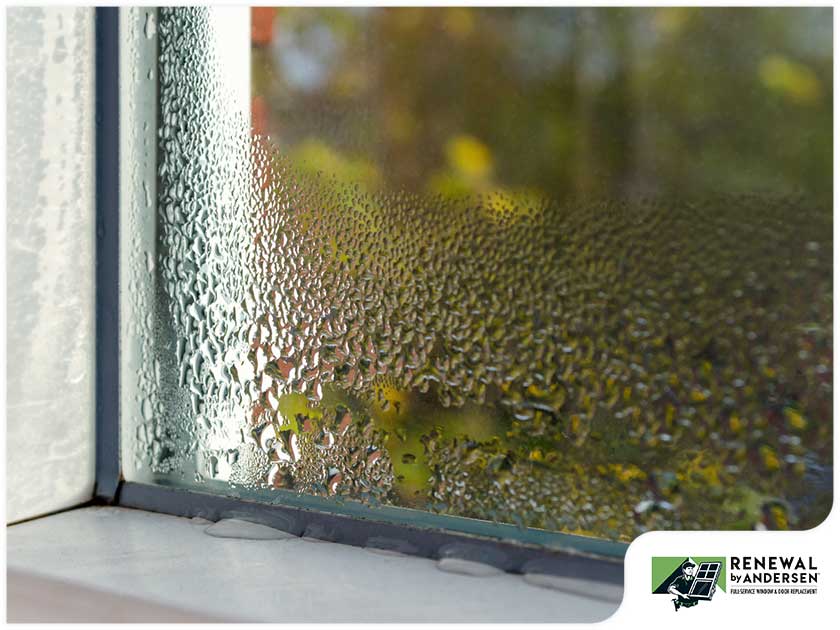

Your windows are an indispensable part of your home. Their contribution to your home cannot be understated since they help improve your home’s curb appeal by enhancing your home’s design. It also enhances your home’s energy efficiency and functionality by augmenting your home’s insulation, natural lighting, and passive ventilation. This is why many homeowners tend to get top-grade windows during a window installation project to reap these benefits.

However, your windows can face some problems that could affect its performance, or the way you use it. One of these issues is when you notice that your windows are “sweating” during the summer months. This occurrence is called “condensation” and it’s normally spotted during the winter months, but it can actually happen just as often during the summer months when we ramp up the usage of our air conditioning units. As such, “sweating” starts to form on your windows as you continue to use your air conditioning unit.
In today’s blog, the top expert on double-hung and specialty windows, Renewal by Andersen® of Cincinnati, shares why your windows “sweat” during the summer months.
Condensation builds up on your windows when the surface is cooler than the exterior air that it comes in contact with. The effect is similar when you put a cold glass of water and leave it outside during a hot summer day. As such, this is evidently shown in your windows during the summer months when the temperature difference between the humid, outdoor air, and the cold, indoor air. This means that summer condensation is mostly visual.
Liquid water shouldn’t cause severe issues since your windows will eventually get wet due to rain and window maintenance. The fogging should reduce once the outdoor temperature normalizes. Once the temperature inside your living space is colder than the outdoor temperature, the Low-E coating of your windows will allow the outside glass to be cooler, equalizing it to reduce condensation. With the right conditions, condensation can occur on windows and doors with Low-E coatings.
During the winter months, we ramp up our heaters to keep us comfortable. However, this causes the indoor humidity levels to rise, making the air inside your home warmer than the blistering winter here in Cincinnati. When winter is in full swing, you can notice “sweating”, or condensation building up on the interior of your windows. The same can also happen during the summer months when the situations are reversed, where there is cooler indoor air compared to the hot outside air. This definitely affects your windows, no matter what season it is.
The reason that condensation forms on Low-E windows actually shows how energy-efficient these windows are at doing their job. If you have poorly insulated, inefficient windows, or single pane windows, you will not notice condensation forming up on them. This is because energy-efficient windows will make it difficult for heat or cold air to escape through the gaps in the glass, which keeps the temperature in your home consistent, proving its energy efficiency.
The difference between the indoor and outdoor temperatures is enough to raise your indoor humidity levels and causes your windows to “sweat” or condensate. However, one might be worried if this means that their windows are of poor quality, or it isn’t energy efficient, or it’s simply defective. This isn’t exactly the case. However, you should try your best to keep condensation at a minimum. While moisture in itself won’t harm your windows, the water that it gathers over time will. This is because the droplets that accumulate on your windows surface can cause a damp patch where mold and mildew can grow and eat away at your system. It can also cause respiratory problems and damage the fabric of your home.
While it’s impossible to keep condensation from forming on your windows ever again, there are numerous actions you can take to reduce the amount of condensation that builds up during the summer or the winter. Renewal by Andersen of Cincinnati shares some of them here:
Renewal by Andersen of Cincinnati offers a wide range of premium windows, including casement and specialty windows. As part of our Signature Service, we customize each and every window according to our customers’ needs. To schedule a free consultation, call us at (866) 609-5033 or fill out this form. We serve homeowners in Cincinnati, Sharonville, Mason, West Chester, as well as the surrounding Ohio communities.